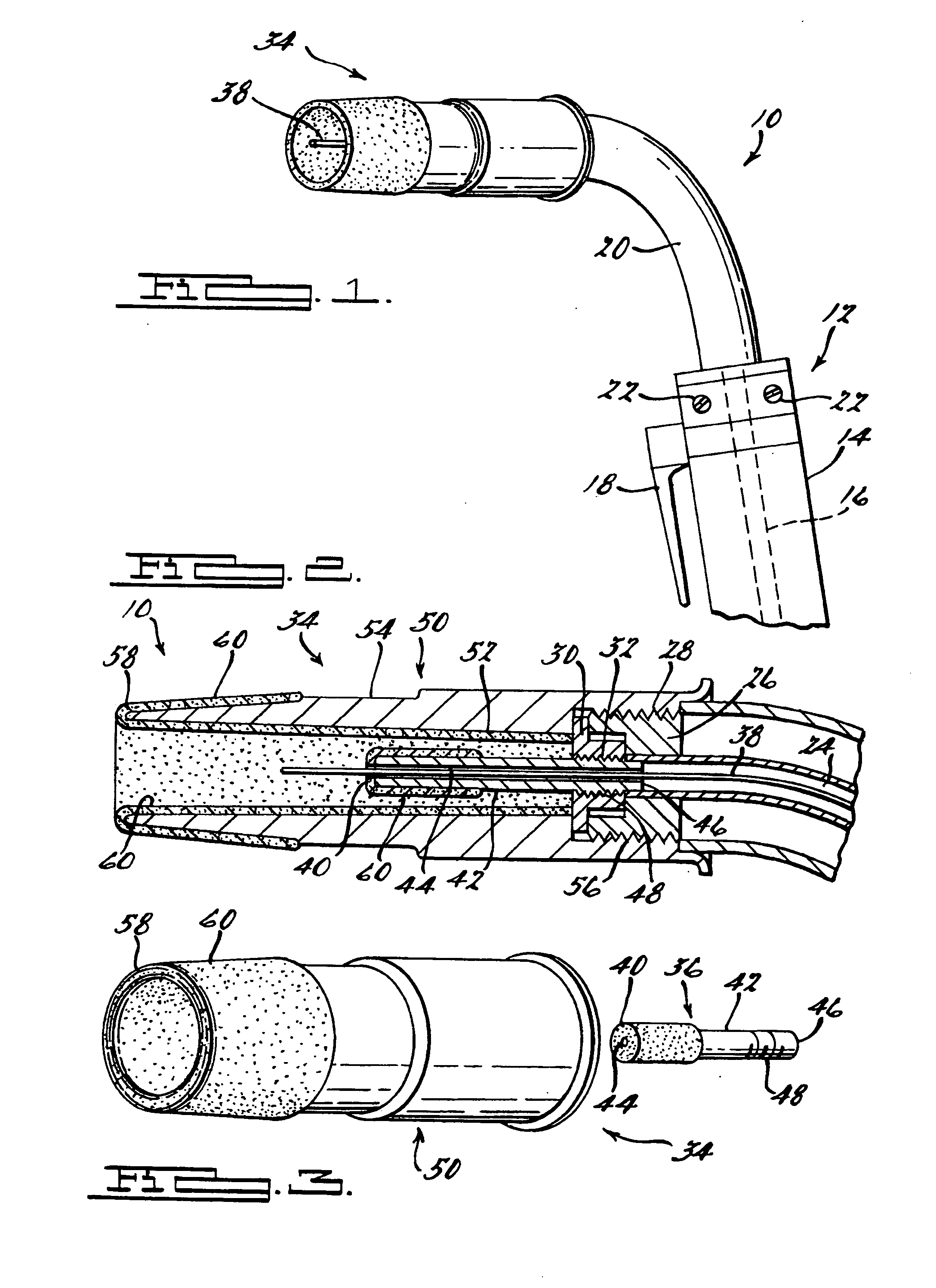Protective coating and coated welding tip and nozzle assembly
a welding tip and nozzle technology, applied in the field of protective coating and coated welding tip and nozzle assembly, can solve the problems of affecting the quality of welds, generating substantial weld spatter, and affecting the process, so as to reduce the accumulation of weld spatter, reduce the disturbance of flow, and reduce the amount of weld spatter. the effect of reducing the amount of weld spatter
- Summary
- Abstract
- Description
- Claims
- Application Information
AI Technical Summary
Benefits of technology
Problems solved by technology
Method used
Image
Examples
example 1
The Preparation and Performance of the Coated Nozzle
[0060] A nozzle and a tip were coated with a coating containing titanium dioxide according to the invention. The nozzle was a typical copper nozzle used in a MIG weld gun, manufactured by Tweeco, Part Number 24A-62 and weighing 83.36 grams. The opening of the tip was plugged to prevent coating of the inner diameter of the tip.
[0061] The coating was applied on the nozzle and the tip and cured. A total of about 870 mg of liquid composition was applied, and the weight of the dried and cured coating was about 670 mg.
[0062] The coated nozzle was tested in a continuous, MIG welding operation, at 190 Amps and 220 Volt. Mild steel workpiece was used to form medium welds having ⅜ inch weld bead. The operation was continued until the nozzle showed physical signs of failure. “Failure,” as used herein, means excessive weld spatter build-up on the coated nozzle, as shown by physical indicators such as the quality of the weld, restriction on ...
PUM
| Property | Measurement | Unit |
|---|---|---|
| Fraction | aaaaa | aaaaa |
| Fraction | aaaaa | aaaaa |
| Fraction | aaaaa | aaaaa |
Abstract
Description
Claims
Application Information
 Login to View More
Login to View More - R&D
- Intellectual Property
- Life Sciences
- Materials
- Tech Scout
- Unparalleled Data Quality
- Higher Quality Content
- 60% Fewer Hallucinations
Browse by: Latest US Patents, China's latest patents, Technical Efficacy Thesaurus, Application Domain, Technology Topic, Popular Technical Reports.
© 2025 PatSnap. All rights reserved.Legal|Privacy policy|Modern Slavery Act Transparency Statement|Sitemap|About US| Contact US: help@patsnap.com

